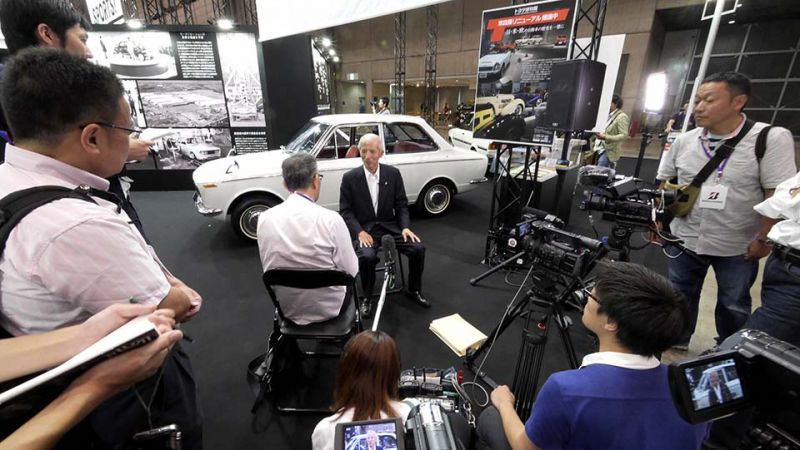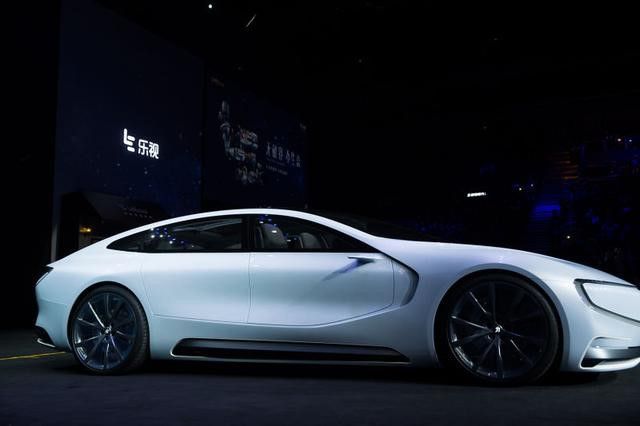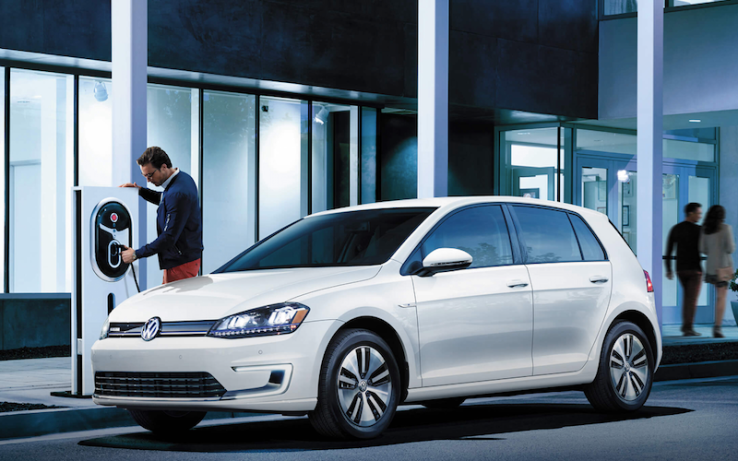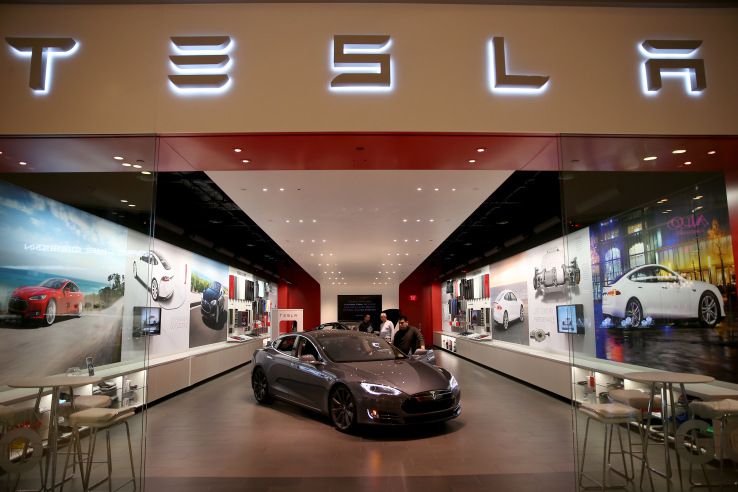Japan Re-Connects With Its Ignored Car Culture
【Summary】Japan has a more than 100 yearlong automotive tradition, but most Japanese carmakers ignore their heritage, and focus on the here and now.

"Japan has a more than 100 yearlong automotive tradition, but most Japanese carmakers ignore their heritage, and focus on the here and now." The man who told me that yesterday, surrounded by some of the finest examples of Japanese car culture, wants to change this.
To reconnect Japan with its vibrant automotive history, Tetsuya Kato founded the Automobile Council, and yesterday was the kick-off of a three-day event supposed to make automotive heritage as important in Japan as it is in America and Europe.
The dapper Kato himself is a high priest of Japanese car culture. He is publisher of the Car Graphics magazine, a glossy, well written and impeccably designed shrine of automotive excellence and excess, with half a century of history. The Automobile Council could not have found a more apropos chairman.

Tetsuya Kato, Car Graphic Publisher, and now Chairman of the Automobile Council (picture: Bertel Schmitt)
It's not that Japanese are less car crazy than the rest of the world. Tokyo's Autosalon, an annual festival of auto madness, has three times the car crazy exhibits than the staid Tokyo Auto Show. Classic car collectors in Japan have festivals throughout the year throughout the country. There even is Japanese Cars and Coffee ( or is that "kuruma and kohee?")
But when it comes to making heritage part of its marketing, Japan's auto industry needs help. In a business where no CEO speech is allowed to end without multiple invocations of the company's DNA, Japan's OEMs do very little to celebrate the genes of their cars. Why is long lineage important when buying a car? It is hard to explain, and somewhat counter-intuitive, but it is. This is even harder to convey in a Japan where on one hand tradition and reputation are important, but where things have to be new and shiny to find takers, whether it is cars, houses, or unmarried brides.
Sure, Toyota has a fine Automobile Museum near the company's hometown in Japan's Aichi Prefecture, andHonda has its Collection Hall, but that's about it. At Nissan, the finest specimens of its more than 80 year history sit in a non-climatized warehouse, inaccessible to the public.

Car culture, embodied in the Nissan Skyline (Picture: Bertel Schmitt)
The absolute benchmark leader in car culture worship is Volkswagen's Autostadt, which in its short 16 years of existence has turned into an automotive Taj Mahal. It has done an impressive job of connecting heritage with the art of selling aspirations. Each year, some 170,000 customers embark on a pilgrimage to Wolfsburg, where they are presented with their new car, get shown the factory, and spend the night at a veritable Ritz Carlton. This alone has turned the Autostadt into the world's largest delivery center for new cars. Not free from having to assure top brass that the venture is more than idle navel gazing, Autostadt management doesn't tire in trotting out statistics that 40% of its visitors drive other cars, something the visit aims to change. The Autostadt produces cultural events like the parent company produces cars, en masse, 250 a year, from a dragon boat race to a Christmas market, complete with an ice skate rink and a bobsleigh track. Japan can learn a lot from this massive marketing moxie.

Small car with big impact on Japanese car culture: The Subaru 360 (Picture: Bertel Schmitt)
The kickoff show of the Automobile Council, held at Makuhari Messe in Chiba, occupies a huge hall 3 of the exhibition complex, it attracted all Japanese major automakers, and a few from abroad. FCA runs the usual blockade of Japanese carshows by American automakers, independent importers show off gems like new Land Rover Defender, verboten in America, but readily available in allegedly closed market Japan.Toyota uses the show to re-celebrate the 50th birthday of its Corolla, and brings long retired Chief Engineers of early generations of Toyota's iconic mass market cars. Talking to the living legends alone would be worth the long trip to Makuhari. Toyota is a bit more in tune with its automotive past, it learned its lessons when a lack of automotive ancestry stood in the way of total domination of the global luxury markets by its history-free Lexus brand.
Despite the important doings, the show runs in stealth mode, no outside signage, no big announcements. The ringing of bells and beating of drums is an important part of cultural events.
resource from: Forbes
-


LeEco raises 1.08 Billion to develop its own electric vehicle
-


Uber's new selfie check helps make sure riders get the driver they're promised
-


Cruise has around 30 self-driving test cars on roads right now
-


Vinli tops the car apps market, adds Meineke and Cox for distribution
-


Volkswagen and Anhui Jianghuai in talks on building EVs for China
-


Missouri court rules against Tesla selling at its own dealerships in the state
-


Watch a Volvo executive play chicken with a self-driving truck in an underground mine
-


AAA says that its emergency electric vehicle charging trucks served “thousands” of EVs without power
- Stellantis to Idle its Illinois Assembly Plant Indefinitely, Citing the High Costs of Electric Vehicles
- China’s Tesla Rival XPeng Unveils its New ‘S4’ 480kW Electric Vehicle Supercharger That Can Add 125 Miles of Range in Just 5 Minutes
- Here’s How Waymo Uses Hyper-Local Weather Data to Improve the Capabilities of its Self-Driving Vehicles
- Chipmaker AMD to Collaborate with ECARX on a Digital Cockpit, In-Vehicle Computing Platform for Next-Gen EVs
- Ford Raises the Prices of the F-150 Lightning Electric Pickup Due to Rising Raw Material Costs
- Good Time to Buy Into China's EV Industry
- Redwood Materials is Building an Electric Vehicle Battery Recycling Facility in South Carolina
- California Startup Orbis Brakes Debuts its Revolutionary 'Periodic Wave' Brake Line Developed in Collaboration with NASA
- Baidu CEO Believes That SAE Level-4 Autonomous Driving Systems Will the First to Enter Commercial Use After L2, Skipping Over L3
- Report Claims Nissan Leaf Will Be Discontinued by 2025











 About Us
About Us Contact Us
Contact Us Careers
Careers